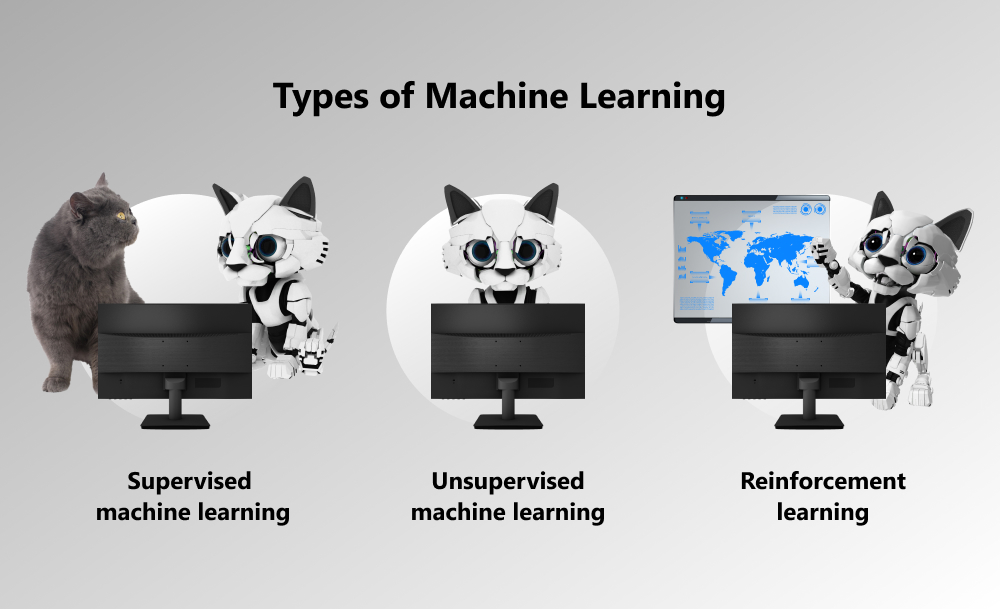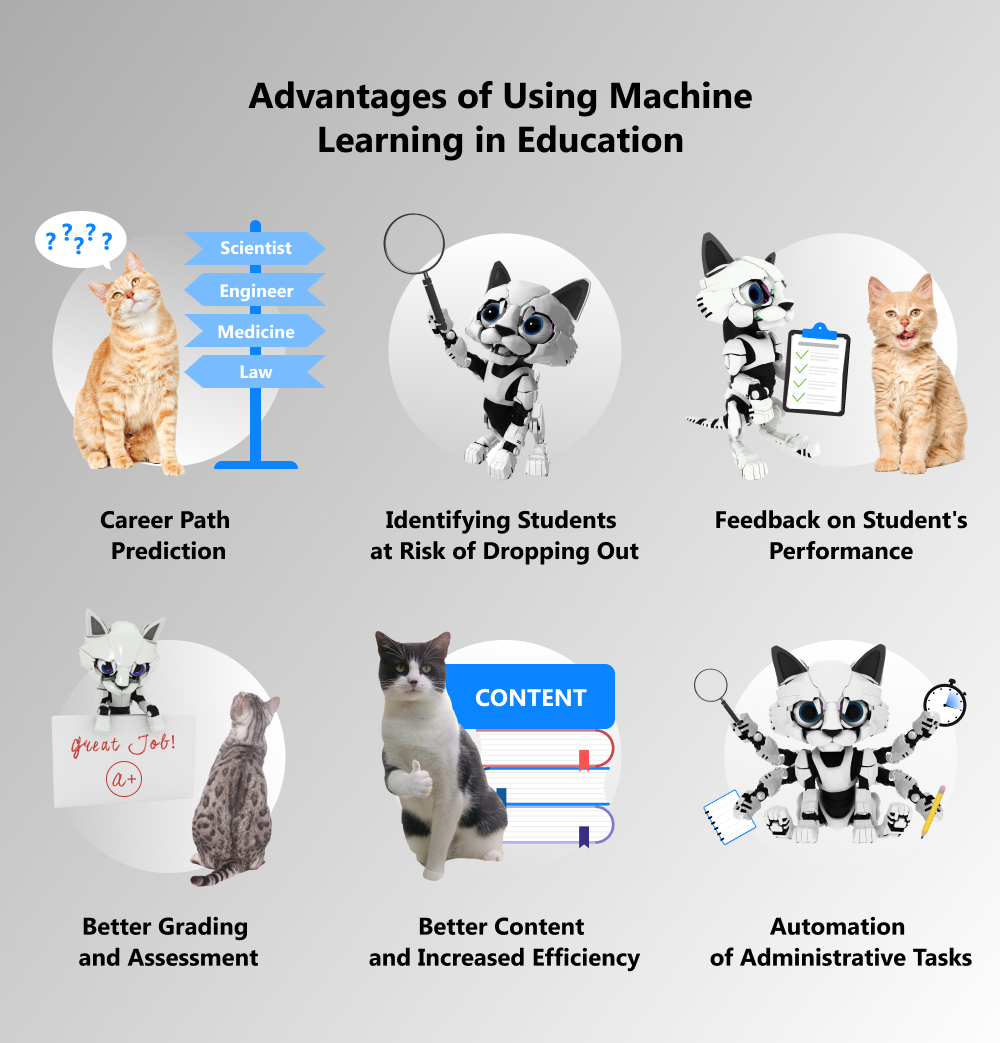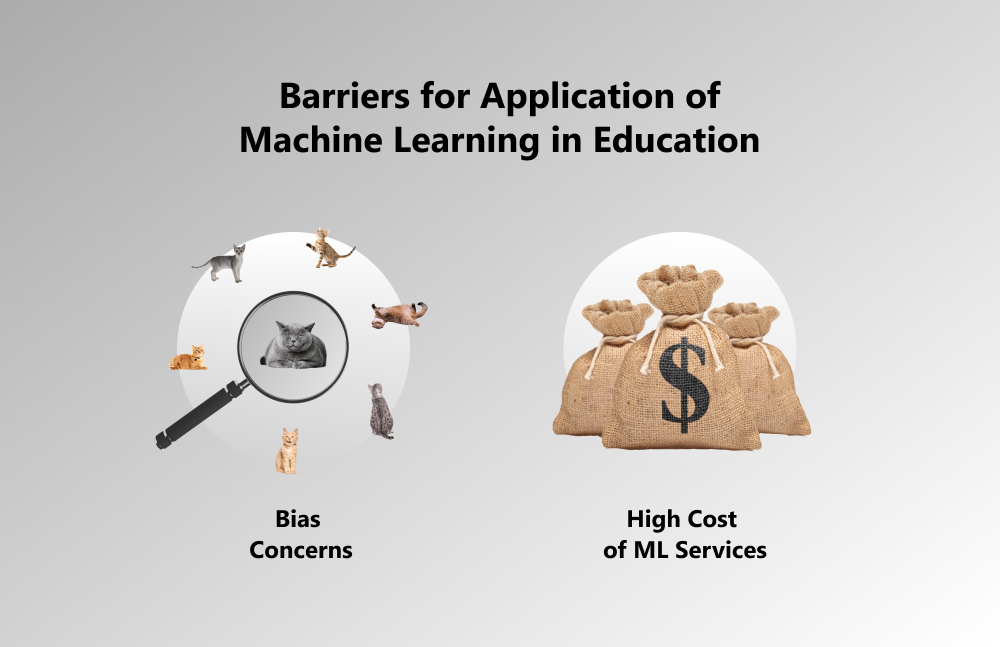Machine learning has been steadily penetrating our lives. This technology is widely used in various industries, such as telecommunications, e-commerce, marketing, healthcare, and so on. The global ML market size reached $8.43 billion in 2019 and is expected to grow to $117.19 billion by 2027, according to Fortune Business Insights. Today, we're going to discuss the application of machine learning in education and how it will change the lives of students and teaching staff.
written by:
Aliaksei Sliborski
Senior Software Developer, Qulix Systems
Machine learning has been steadily penetrating our lives. This technology is widely used in various industries, such as telecommunications, e-commerce, marketing, healthcare, and so on. The global ML market size reached $8.43 billion in 2019 and is expected to grow to $117.19 billion by 2027, according to Fortune Business Insights. Today, we're going to discuss the application of machine learning in education and how it will change the lives of students and teaching staff.
Contents
Machine Learning in More Detail
Machine learning, or ML, is a subset of artificial intelligence based on mathematical models that are capable of learning to solve problems of varied kinds and origins. Learning occurs either by identifying patterns or using a knowledge base with already formalized and structured data.
What is the difference between machine learning and artificial intelligence?
Artificial intelligence, or AI, is a set of complex problems that previously could be solved only by humans due to the constant need to adapt to the changing situation. Thus, being an integral part of AI, dealing with predictive tasks, optimization, and search for abnormal behavior, machine learning forms the ability of AI to solve the assigned tasks. Machine learning is one of the directions of AI, which is one of the most perspective instruments for business nowadays. Its aim is to partially or even fully automate the solution of various complex analytical tasks.
Types of Machine Learning
There are three types of machine learning:
Supervised machine learning. The idea behind this method is that the computer learns from the data prepared in advance, which are basically real-world examples but can also be supplemented by artificially created ones. For example, you want to teach it to differentiate dogs from cats. You load the data sets in the program and say to the computer that these images contain cats, and those — dogs. It will find common features, analyze them, and build bridges between them. When you show the image without the description, the computer should determine what animal is represented in the image. It's important to select and load as much correct training data as possible.
Unsupervised machine learning. This method is applied when it's impossible to provide the computer with relevant data. It recognizes patterns and common features and then classifies them by itself. Unsupervised machine learning is perfect for data segmentation and widely used in targeted advertising and recommendation systems (e.g., people who liked this product positively assess another one).
Reinforcement learning. This type is used to solve more complex tasks and requires you to interact with the environment to get the data that will allow the computer to learn. This method is applied to teach robot vacuums and self–driving cars. What's interesting, the learning takes the form of a game when the computer gets a score for the right decision and loses it when the decision is wrong.
Machine learning is currently applied in many areas, including the education sector, healthcare, banking sector, retail, industry, and many others. It is aimed at making precise predictions based on input data to allow business owners, managers, marketing specialists, and other employees from various industries to make the right decisions. As a result of the learning, an algorithm (mathematical model) can reliably predict any outcomes, remember and reproduce them, as well as choose the best scenario.
Let's see how machine learning can be used in the educational system, and how students and teachers can use machine learning to boost their performance, improve knowledge, and make progress.
Benefits of Using Machine Learning in Education
Career Path Prediction
Machine learning algorithms can help students choose education facilities and their future careers. High school seniors often find it difficult to choose a profession. This fact is confirmed by a study conducted by Indeed in 2019. Researchers revealed that almost 50% of US employees have changed their careers in recent times. About 78% of respondents were unsatisfied with their jobs. Teenagers can't objectively analyze their skills, abilities, and interests to make important career decisions. ML technology is here to help them find their career path.
For this purpose, Austin Peay State University adopted a recommendation system based on learning analytics to help students choose the most suitable education course. The system considers their performance and learning outcomes in previous classes and matches them with the available training courses. As a result, learners will be able to attend lectures that correspond to their interests and capabilities. By the way, the accuracy of this solution is high and estimated at 90%.
California-based Occidental College also decided to develop the ML solution aimed at improving the enrollment and admission process. The machine learning algorithm is used to divide applicants into two groups: those who will accept an admission offer and those who will reject it. The prediction techniques will allow the educational institution to better estimate the class sizes, control net tuition revenue, and allocate resources more optimally.
Identifying Students at Risk of Dropping Out
Let's see what else can ML technology offer to the education sector? In addition to predictive analytics, educators can use machine learning algorithms to identify students who need assistance and are at risk of leaving school, training courses, and so on. Just imagine that about one in three students dropped out of college in the United States in 2020. That's why it's important to detect these students in advance and try to help them. The machine learning software tools will apply various models to determine the student's chances of completing or not completing their studies in due time.
For example, Florida International University (FIU) has already taken advantage of the benefits provided by machine learning for education. They use DataRobot to detect at–risk students, help them cope with obstacles, and graduate from the university. Educators hope that other educational institutions from all over the world will also use ML technology to allow their students to get an education.
Feedback on Student's Performance
In addition to predictive analytics, ML solutions use adaptive learning as well. They help educators not only keep students engaged in the classroom but also monitor their performance and give them feedback. Besides, ML technology can assess how learners perceive the material that lecturers give them.
Lecturers, in turn, will see what and why students don't understand and how to change this situation so that they feel comfortable in the classroom and have no problems. ML technology offers learners a personalized learning model. They have gotten an opportunity to choose the subjects they're interested in and the lecturer they want to learn from. Educators will have their benefits since they will be able to focus on important issues and manage students, materials, and the learning process more effectively.
For instance, Kent State University uses adaptive learning technology to help students achieve success in mathematics. This platform, known as ALEKS (Assessment and Learning in Knowledge Spaces), assesses students' knowledge of math, identifies areas of concern, and clearly explains how to fill the gaps using ALEKS Preparation and Learning Modules. University of California, Santa Cruz also applies this solution to provide their students with personalized recommendations.
Better Grading and Assessment
Machine learning in education can be successfully used to improve grading systems. Firstly, it will save the teacher's time because an ML solution needs just a few seconds to assess the test, essay, and so on. Lecturers usually have many students and don't have enough time to check their works. As a rule, they ask their assistants to help with checking and assessing the tests, which sometimes results in mistakes and wrong grades.
Secondly, the algorithm makes the grade more transparent and fair. We are all human, and sometimes the teacher's personal attitude towards the student can have an impact on the grade. ML technology allows us to avoid biased assessment in the education sector.
Teaching staff from the University of California at Berkeley also believes that an automated grading process can solve this problem. For this purpose, local experts have created the Gradescope, an ML program that automates the grading of tests and exams. How does it work? Gradescope scans students' tests and other works for correct answers and gives a mark. However, ML tools can't fully replace the teaching personnel. They are good for exact sciences and almost useless for the humanities. How can a computer properly evaluate an essay? It will easily reveal grammar mistakes but won't be able to check the sense and understand the author's ideas.
Better Content and Increased Efficiency
Machine learning-based solutions have the potential to improve the content and increase efficiency in the education industry. For example, Turnitin developed the Revision Assistant that uses ML technologies to help students upgrade their writing skills by getting instant feedback. As we have mentioned above, when a teacher has to manage a large class, he or she finds it difficult to immediately comment on the learners' drafts. This online platform offers the education branch other benefits, such as fighting plagiarism, identifying students' strengths and progress, allowing educators to analyze and track performance in real-time. A similar project was created by the Open University team. They developed OpenEssayist that uses the machine learning algorithm to assess students' essays and generates automated feedback.
Automation of Administrative Tasks
Everyone knows that teaching personnel in all parts of the world have to work with tons of paper documents. They check a lot of students' tests, make plans, fill out forms, write instructions, give grades, and so on. According to an Ofsted survey, the administrative tasks occupy 7% of the teachers' time, which could be spent on more useful things. Machine learning software can take this burden off the lecturers' shoulders. Teachers will be able to focus on working with students in the classroom, creating interesting and relevant content, discussing progress and expected outcomes, and so on.
Pitfalls for Application of Machine Learning in Education
In spite of the fact that machine learning technologies provide the education branch with numerous benefits and bring outstanding results, there are some obstacles here. Let's take a closer look at them.
Bias Concerns
As we've discussed above, machines give grades and provide feedback according to the algorithms. They don't depend on the human factor and ensure grading transparency. Nevertheless, the grading system still requires human participation. A Motherboard research found out that sometimes the ML platforms cannot adequately assess the students' essays for the quality of writing. That's why ML technologies should be upgraded to serve students and lecturers well.
High Cost of ML Services
The application of machine learning in education is complicated by the fact that these solutions are expensive. The cost includes the development of a unique model, as well as its maintenance and upgrading. Schools and universities need to increase their budgets to buy the software based on ML technologies and train employees to use these instruments and algorithms
Final Word
What are the benefits provided by machine learning for education? It makes the learning environments highly personalized and adaptive to the requirements of every student. ML solutions help students realize their potential, make progress, and show excellent outcomes. Lecturers see how ML technologies considerably simplify their tasks, save their time, and allow them to devote their attention to students. The application and adoption of machine learning in education provide exciting opportunities for students, too. It will be easier for them to pick a career, improve their writing skills, receive support and recommendations in time, overcome barriers and get an education, as well as reckon on fair grading. There are some challenges regarding privacy and prediction flaws that are expected to be solved in the near future.
If you have any questions regarding machine learning solutions for education and other industries, contact us or visit our official website for more details. The Qulix System team has broad experience and expertise in bringing ML instruments for various domains.

Contacts
Feel free to get in touch with us! Use this contact form for an ASAP response.
Call us at +44 151 528 8015
E-mail us at request@qulix.com








